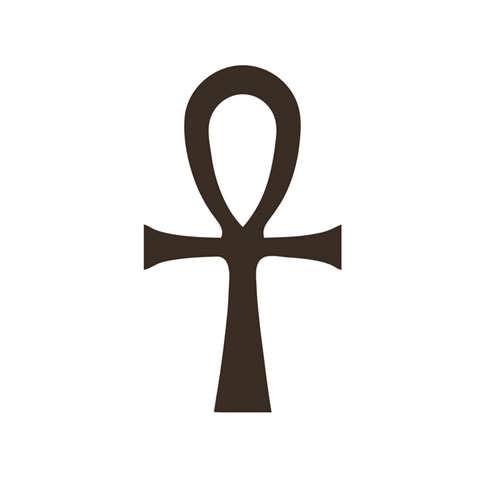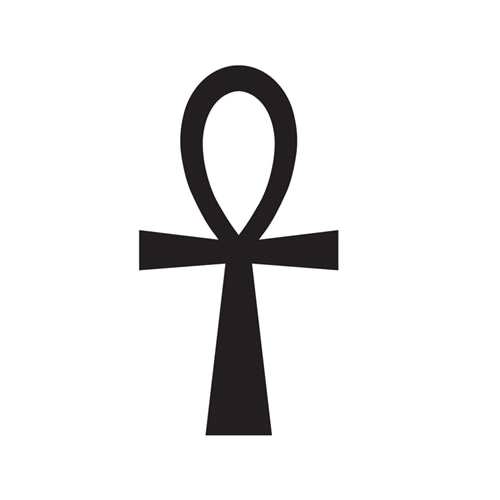Also known as the Key of Life, the Ankh Symbol takes the shape of a cross with a loop on top, resembling a key. In the ancient language of Egyptians, the ‘ankh’ meant ‘life.’ It is considered one of the earliest and most popular hieroglyphic symbols from ancient Egypt. It is said that the loop on the ankh symbolized the feminine or the womb, while the cross symbolized the masculine or the penis. When the two are put together, life is formed. Many believe that the Ankh is also a symbol for water and air, which are life-giving elements. Because of this, many water vessels were formed in the shape of an Ankh.
Many early Egyptian artworks depict this sacred symbol being worn or held by gods and kings. Used as an amulet, the Ankh was believed to be able to grant the wearer long life and health. Ancient Egyptians even put ankhs in tombs to give energy to the resurrected spirit. It is said that the symbol can even carry on its power to anyone within a certain proximity to it. As such, it is believed to be a conduit for life or power that stems from the universe. The Ankh can also be used to protect against evil, decay, and degeneration.
Symbols Menu:
» Amulet
» Ajna
» Arsenic
» Merkaba
» Hung
» Yin Yang
» bindi
» IK Onkar
» Khanda
» Halo
» jiahu
» Tau
» Uraeus
» Menorah
» Quincunx
» Tilaka
» Taijitu
» Vajra
» Chai
» Chi Rho
» Bagua
» Dragon
» Hunab Ku
» Caduceus
» Infinity
» Ichthus
» Hedjet
» Lauburu
» Om
» Ankh
» Chalice
» Pentacle
» Maat
» Ogham
» Mandala
» Kartika
» Khamsa
» Heart
» Labrys
» Sun Face
» Raven
» Triskele
» Scarab
» Dove
» Hanukia
» Anubis
» Trishula
» Durga
» Mezuzah
» Bay Tree
» Geruda
» Kinnara
» Quito
» Condor
» Blue Jay
» Falcon
» Makara
» Rosary
» Uluru
» Apsaras
» Hanuman
» Serpent
» Minotaur
» Mercury
» Apex
» Vestra
» Yoni
» Astarte
» dakini
» Calabash
» Mandrake
» Rebis
» Typhon
» Vegvísir


